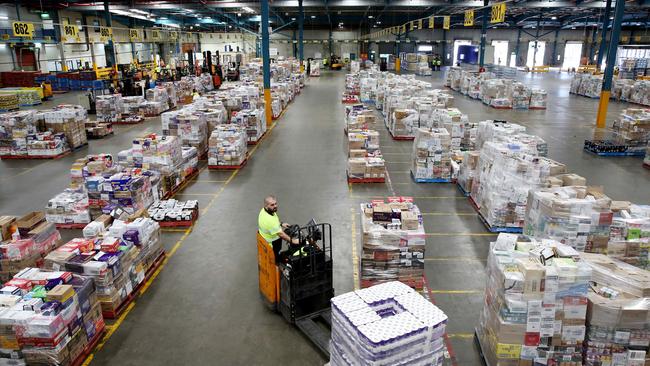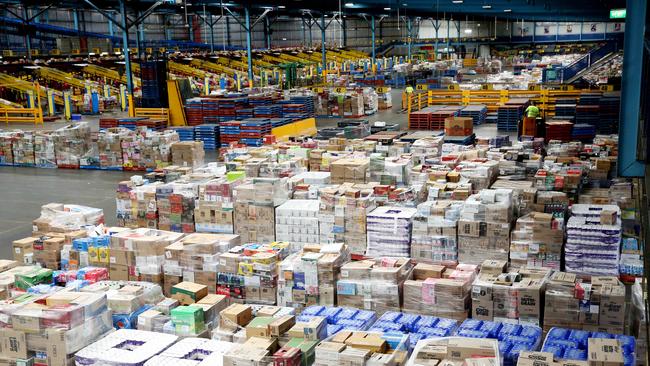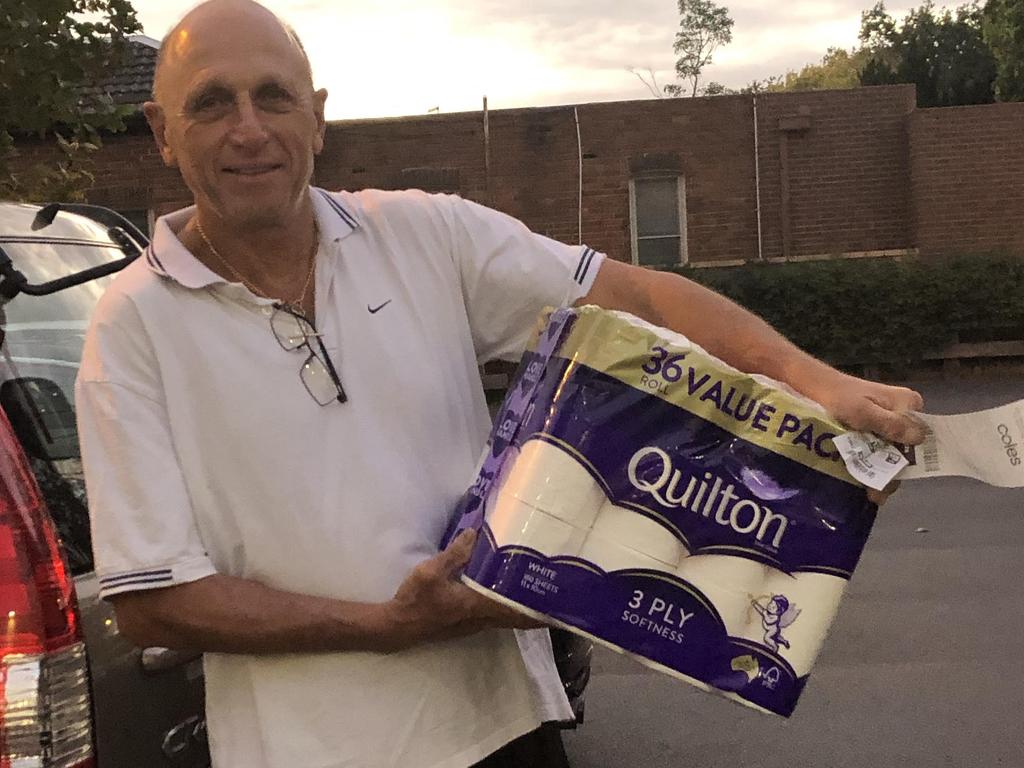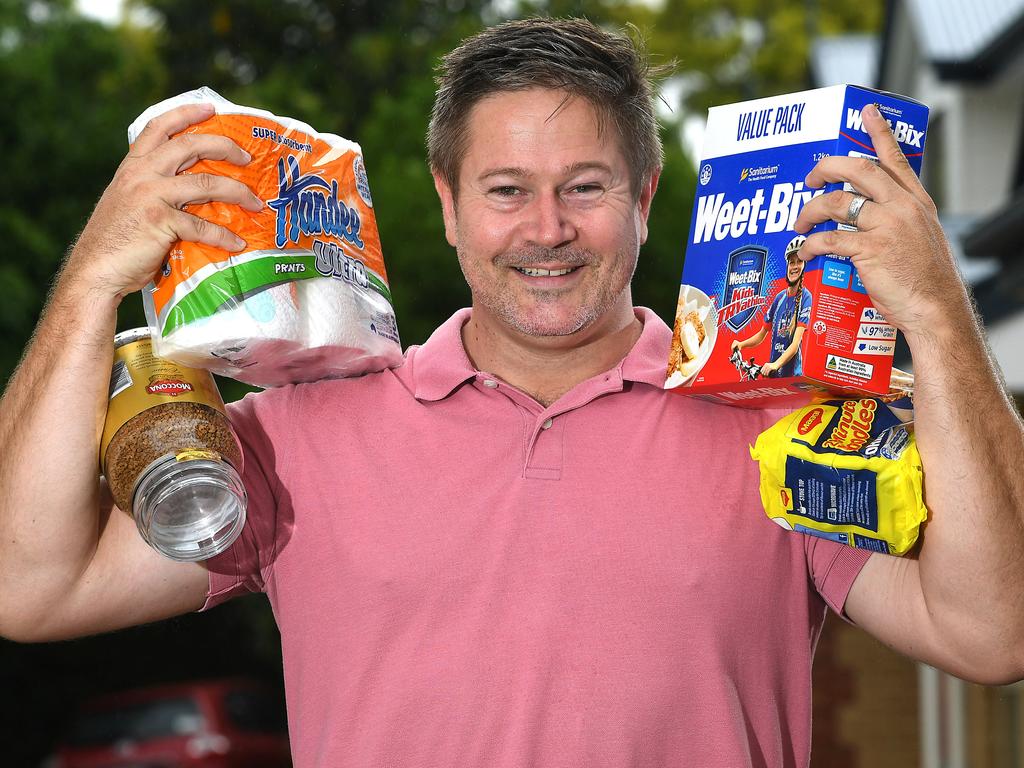Coronavirus: Inside the Woolworths operation to roll out the toilet paper rolls
A depot in Sydney’s west is at the epicentre of efforts by the country’s biggest supermarket retailers to restock shelves.

At a Woolworths warehouse in western Sydney, a forklift driver drags a pallet of toilet paper so huge it could placate even the most panicky horde of shoppers.
The depot in Minchinbury is at the epicentre of efforts by the country’s biggest supermarket retailers to restock shelves that are constantly being depleted, as warehouse workers, forklift drivers, truck drivers and the occasional robot unload, pack and reload every type of grocery.
Such is the unprecedented demand by shoppers, up by two or three times the usual buying level, according to Woolworths chief executive Brad Banducci, that Woolworths is seeking to put on more staff and is churning through supplies at warehouses kept open and running 24 hours a day.
Woolworths has set up an emergency management team and crisis management team within its supermarkets business to ensure rapid daily decisions are made in the face of the panic buying triggered by the coronavirus pandemic that has seen its supermarkets stripped of products from toilet paper to meat.

Such has been the pressure on its stores that its chief executive has characterised it as Woolworths being pushed to feed 50 million Australians a week.
Mr Banducci said a recent “surge in demand” had accelerated since Friday and made it impossible for its supply chain to keep up. This made it harder to restock the shelves overnight or during the day to make sure customers could see the store had adequate supplies.
Demand in its stores had been two or three times the normal levels, with this “surge demand” also disrupting its ability to restock key staples such as toilet paper or meat at the same time as other products.
“And in that context it is virtually impossible for any of us to keep up with that, in simplistic terms we have been asked to feed 50 million Australians a week versus 24 million and that is just physically not possible.”

If Australians did not moderate this surge it would significantly impede its ability to fill the shelves, and the sooner people stopped stocking up and panic-buying the better, he said.
“It is a chicken and egg,” Mr Banducci said. “Panic-buying sees a lack of stock and it causes panic-buying, so we do have that, a self-fulfilling prophecy.
“I think moderate what you buy, buy what you need, and if everyone does just that we will get back to full shelves in short order.’’
He said Woolworths would take advice from governments and health authorities, with safety at its warehouses a top priority as all the brisk, frenetic activity was pushing its teams to the limit.
“Everyone in our business — like any other retailer in Australia, and having spoken to the other CEOs — is working exceptionally hard right now … in terms of our warehouses, we are working 24 hours a day and pushing to get as much product as we can, priority products … are being pushed through fast.
From an outsider’s point of view, it appears it’s very much business as usual at Woolworths’ distribution centre.

In just over an hour on Wednesday afternoon, about 10 hulking green and white trucks left the warehouse.
They filed out one by one about 3.30pm while about 40 other trucks sat idle inside the company’s expansive carpark.
Workers, meanwhile, loudly complain of being rostered to start at 4am the next day as they breeze slowly out of the front gates.
In Victoria, at Coles’ Malvern store, Ian, who did not want his surname published, emerged with a Quilton 36-roll value pack of toilet paper after looking since Sunday.
He said the purchase was for his daughter, who was arriving with her partner from the US and would be entering self-isolation for two weeks.
Elderly people anxiously lined up outside the store just after 6am.
Staff directed the shoppers to form an orderly queue down the side of the store in the pre-dawn light. Virginia Strickland, 60, stood in line. She said she was shocked by the stockpiling and panic-buying. “If our fathers were here, they’d be horrified,” she said. “I’m sure they didn’t act like this in the war.”
ADDITIONAL REPORTING: KIERAN GAIR




To join the conversation, please log in. Don't have an account? Register
Join the conversation, you are commenting as Logout